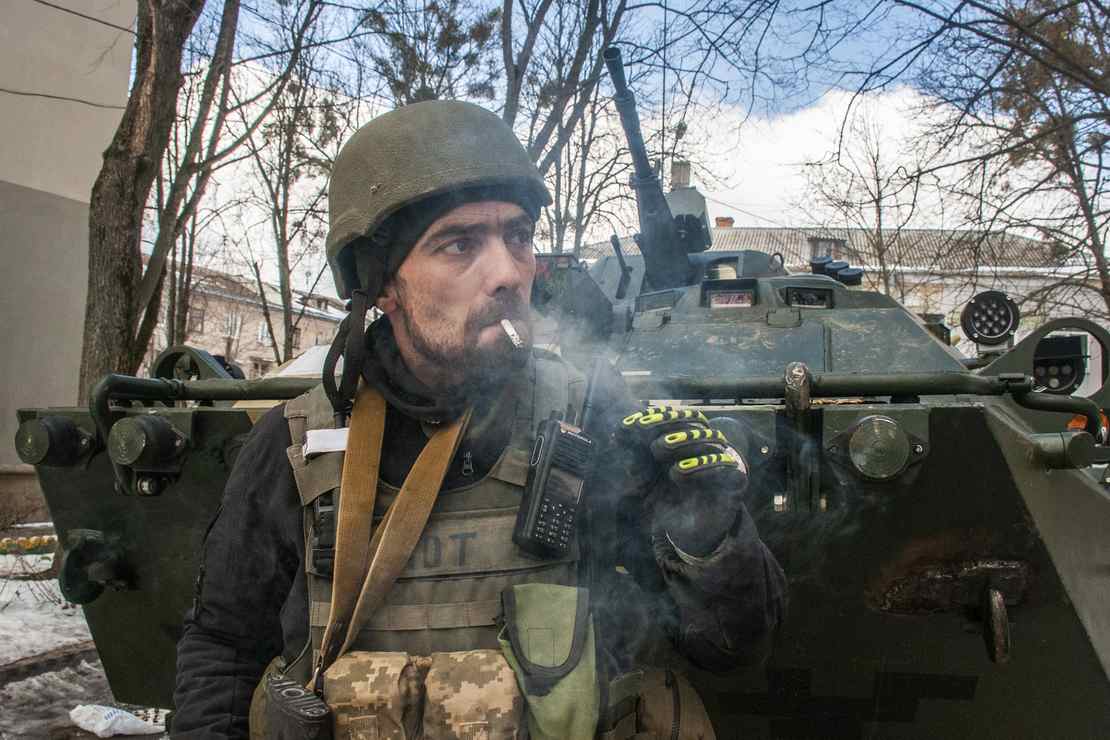
This must be the best week of the war for Russia so far.
I mean, all the others have been bad ones. If only by process of elimination, this is the high-water mark.
I wrote a few days ago about the Russian mini-breakthrough in the town of Popasna in Luhansk. That advance to the west has created an opportunity for the Russian army to seal off a pocket of territory in the northeastern Donbas, encircling the cities of Sievierodonetsk and Lysychansk. (See this map if you’re having trouble envisioning it.) They’re too worn down to do it quickly, it seems, but the Ukrainians are also worn down and struggling to hold back the Russian advance.
And so, on the one hand, we shouldn’t exaggerate what Russia has achieved lately:
#Russian forces have likely abandoned efforts to complete a single large encirclement of #Ukrainian forces in eastern Ukraine and are instead attempting to secure smaller encirclements—enabling them to make incremental gains.
Read the full report: https://t.co/xCKUYx86uZ pic.twitter.com/ouPAzVwPFt
— ISW (@TheStudyofWar) May 25, 2022
On the other hand, anecdotal reports from the battlefield today aren’t great:
It’s not that Ukrainians have nothing to answer with, but there was much more incoming Russian fire than outgoing Ukrainian. They need more ammo and better systems for shoot and scoot; not next year but now. pic.twitter.com/E49Qgbl5yM
— Björn Stritzel (@bjoernstritzel) May 24, 2022
Zelensky recently claimed that Ukraine is losing 50-100 men per day to the fight in the east, a high casualty rate. Experts who are watching the war closely remain bullish on Ukraine’s chances but their tone has grown more cautious, shall we say, about near-term prospects in the Donbas.
There are rumors that UKR is bringing in reinforcements to prevent a larger Russian breakout. Either way, the fight in the Donbas is much less significant for UKR than it is for Russia. If it must, Ukraine can trade territory for attrition, then hope to retake it later. 11/
— Michael Kofman (@KofmanMichael) May 25, 2022
I think we shouldn’t overstate the significance of the Russian breakthrough at Popasna, but also consider the implications. Are UKR forces going to be in position to conduct a major counteroffensive in the near term, or will both sides face a degree of exhaustion? 13/
— Michael Kofman (@KofmanMichael) May 25, 2022
The chances of the Russian military breaking and disintegrating under Ukrainian pressure appear to be receding, Kofman argues. And because both sides are focused on the area around Sievierodonetsk, their forces in other parts of the country are getting a breather and an opportunity to shore up their defenses. That’s going to make it harder for any eventual Ukrainian offensive in the south to try to back cities like Kherson.
Russian logistics seem to be improving too now that they’re not overextended around Kiev and Kharkiv:
Not good news for Ukraine is this is evidence that Russia has a pretty efficient logistical rail system up and running. Melitopol is relatively far into occupied Ukraine and these tanks were supposedly sent not that long ago. Also indicates Ukrainians have not cut rail lines.
READ RELATED: New San Diego Ordinance Changes the Definition of 'Woman'
— Phillips P. OBrien (@PhillipsPOBrien) May 25, 2022
Still, Phillips O’Brien is keeping things in perspective. The advance on Popasna and battle around Sievierodonetsk aren’t strategically significant, he claims. Their most lasting impact on the war is likely to be the price in blood paid by each side. In what sort of condition will the two armies be to continue the fight after the battle in the northeast shakes out?
Under no understanding of modern combined arms war would the Russians have been considered to have made a breakout and pursuit/exploitation. Its a grinding, attritional advance. Could the Russians surround SDonetsk? Yes. But they will do it following a WW1 timetable.
— Phillips P. OBrien (@PhillipsPOBrien) May 25, 2022
The Ukrainians appear to share O’Brien’s view. They may lose Sievierodonetsk but they’re going to take a bite out of Russia’s remaining manpower in doing it:
Russia is paying a steep price for the gains it has made. The Kremlin is sending units from southern Ukraine to fight in Donbas, according to Ukrainian officials, and losing so many men that continued Ukrainian resistance could eventually force it to shift strategies again.
Ukraine’s Defense Ministry said Wednesday morning that nine attacks had been repelled in the Donetsk and Luhansk regions, which together form Donbas. Dozens of Russian vehicles were destroyed, the ministry said, including three tanks.
Mr. Haidai said that holding Severodonetsk would be crucial for Ukraine’s efforts to stop any further Russian advances, adding that the heavy casualties would eventually force Moscow to ease the assault.
“They are no more bulletproof than anyone else,” he said of the Russian soldiers. “If they do not succeed during this week—by Saturday, Sunday —they will get tired, and the situation will at least stabilize for us.”
Hopefully. Nathan Ruser has been studying maps of the terrain around Popasna and believes Russia has an advantage there, as they control the high ground. The Ukrainians won’t be able to ambush their forces as easily as they did in the suburbs of Kiev. Even so, it’s unclear if the Russians can sustain their momentum at this point…
In short, this is a significant and likely eventually successful maneuver by Russian troops, one that may even threaten heavily fortified positions in Sievierodonetsk and Lysychansk with encirclement, and force Ukrainian high command to make some difficult decisions.
— Nathan Ruser (@Nrg8000) May 25, 2022
And, after 90 days of conflict, the fighting has shifted from broad maneuvers across the landscape, to highly localised, highly costly battles much more akin to those in WW1 than what we expect from modern warfare.
— Nathan Ruser (@Nrg8000) May 25, 2022
…especially when morale isn’t great:
Here’s a message from the 107th Infantry Regiment of the DPR basically telling the Russians they don’t want to go fight for the LPR pic.twitter.com/h4w9Dzsz3e
— OSINTtechnical (@Osinttechnical) May 24, 2022
“DPR” stands for Donetsk People’s Republic, which is Russia’s nomenclature for one of the two Ukrainian regions in the Donbas that’s been contested since 2014. Evidently the Russian separatists there aren’t enthused about heading north to fight for the “LPR,” or Luhansk People’s Republic, knowing how ferocious the battle in Luhansk is right now. Sounds to me like they’re taking the idea seriously that Donetsk is its own autonomous region rather than a Russian cut-out that’s destined to ultimately be absorbed by Moscow. Which is absurd. Haven’t these guys gotten their new Russian passports yet?
Source:





